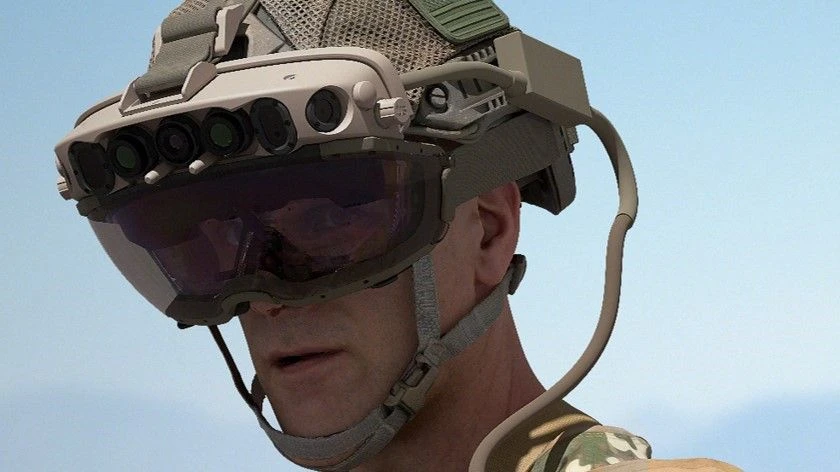US Army asks Microsoft to make its Kill-O-Vision head-sets a little cheaper
Microsoft signed a $22 Billion deal with the US Army in 2021 to develop the Integrated Visual Augmentation System, based on the HoloLens head-mounted display. Not everyone was thrilled with the idea of producing AR headsets for the US military--intended to improve "situational awareness, target engagement, and informed decision-making"--and, as usual with military procurement, there were bumps and delays along the way, but despite all of that the program continued to grind forward. The IVAS headset faces its biggest challenge to date: they're too damn expensive.
Bloomberg reports that the army will order up to 121,000 IVAS headphone depending on the results of testing, which is scheduled to end in mid-2025. Army acquisition chief Doug Bush told the Association of the US Army that tests are "going much better" than the first time, and that "a lot of the issues [from earlier iterations] were fixed." But sticker shock still remains: the headsets are projected to sell at $80,000 per unit, but the army wants to see them come in "substantially lower" than that.
This is the total price: The IVAS costs $42,000, but you also have to factor in other expenses like Army program management, software support and other costs. Microsoft's corporate vice president for Mixed Reality Robin Seiler stated that the company is "going through the program" to identify areas where costs can be reduced.
Seiler said that the system is complex, and when looking at cost reduction, you need to consider it at a component level, a labor level, and your supply chain.
It's not surprising that the IVAS wants to keep its prices lower than what a large corporate conglomerate would charge. But this isn't first time the IVAS's price has been criticized.
In 2022, US Department of Defense (via TechSpot), warned that the program "could lead to a waste of up to $21.88 Billion in taxpayer funds," because it was not clear whether soldiers would actually use them. Business Insider reported in the same year that the headset was criticized for its size, weight, loss in peripheral vision, and the glow of the display which could be seen from far distances, revealing the wearer's exact location. It looks cool on Sam Fisher but, as one tester said, in the real world "the devices would have got us killed." Then, in 2023, the US Congress blocked the Army’s plan to purchase 6,900 headsets at $400 million. Instead, it gave Microsoft another $40 to create a better one.
Microsoft ceased production of the HoloLens 2 earlier this month, but told UploadVR that it remains "fully commited" to developing the IVAS.




Comments